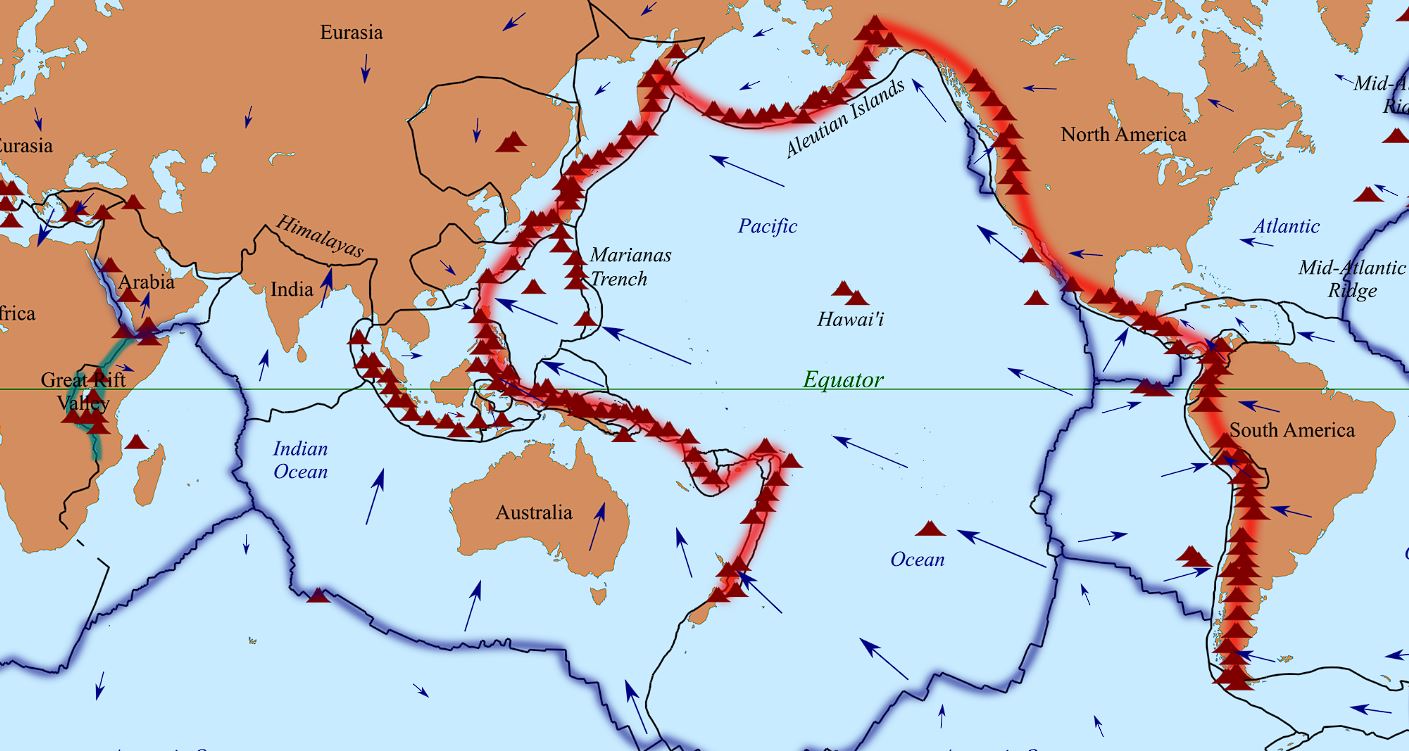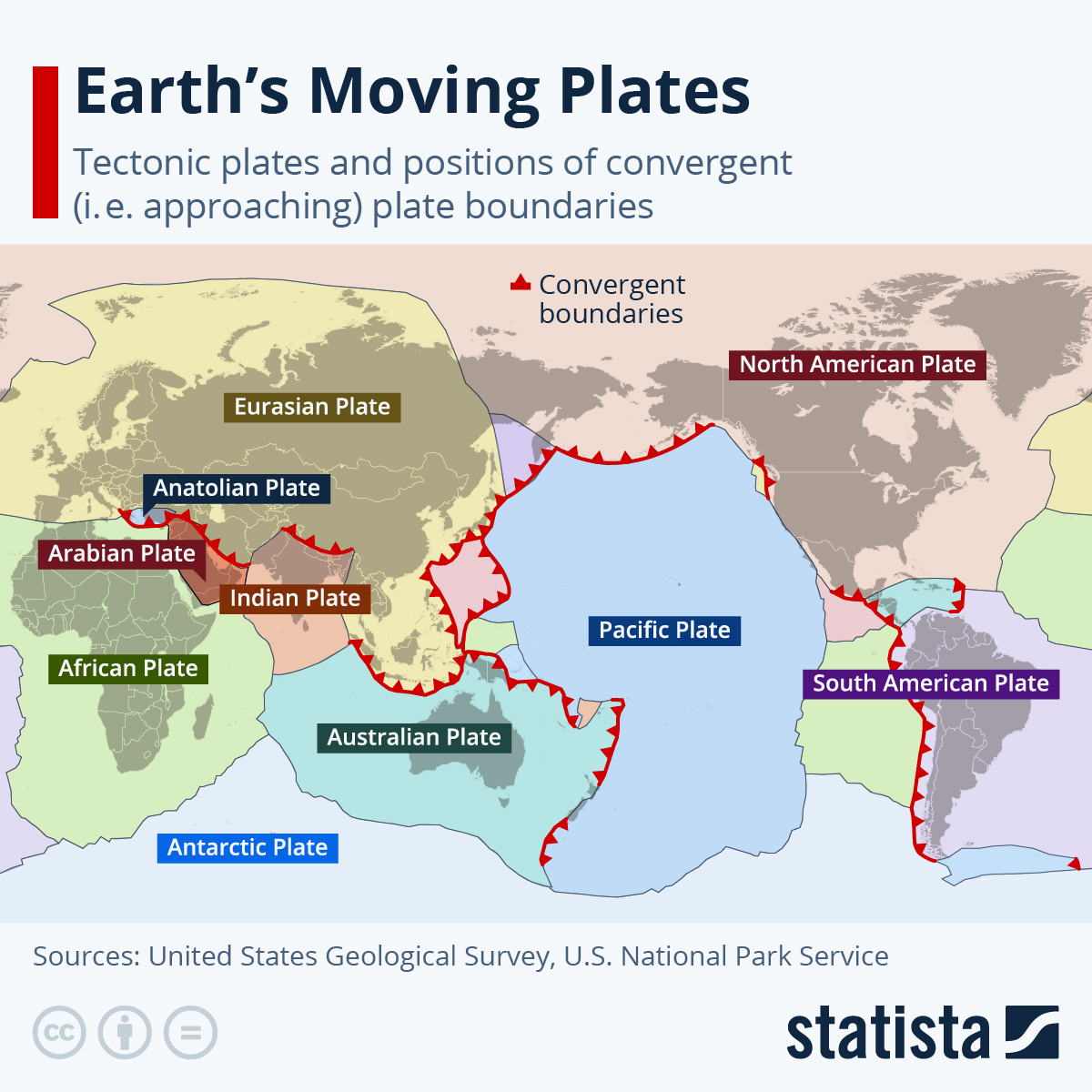On February 6 and 7, the Southeast of Turkey and the Northwest of Syria have been hit by devastating earthquakes. In addition to the main tremor that reached a magnitude of 7.8 on the Richter scale, more than 20 aftershocks with magnitudes between 5.0 and 7.5 were registered in the earthquake-ravished region around Gaziantep. Since Monday, the death toll of the disaster has climbed to 17,000 in Turkey and neighboring Syria, according to CNN.
The cause of the Turkey-Syria earthquake – and all other earthquakes – lies in the phenomenon of plate tectonics, i.e. the continental drift of the plates which make up the Earth’s mantle. As our graphic shows, several such plates meet in Turkey, which significantly increases the risk of serious earthquakes. Even more importantly, some plates in Turkey move convergently, i.e. they are approaching each other, which also makes major earthquakes more likely than in places where plates move apart. More specifically, the East Anatolian fault – along which this week’s earthquake occurred – is characterized by a convergent boundary with the African plate to the south and a transform boundary of horizontal movement with the Eurasian plate to the north. This further exemplifies how much seismic activity is present in the region that has now been turned into a disaster zone.
Turkey lies on the Anatolian Plate, which is on the line of tension between the Arabian and Eurasian Plates. The African Plate, which contributed to the formation of the Alps 60 million years ago by drifting north, also borders the Anatolian Plate. Along the edges of the Pacific Plate runs the so-called Ring of Fire responsible for much of the world’s volcanic activity – another place where convergent plate boundaries exist. Other plates are the Australian, North American and South American plates. The strongest earthquakes in recent history all took place along the Ring of Fire, which also includes the well-known Mariana Trench, around the Pacific Plate. An earthquake with a magnitude of 9.5 was measured in Valdiva, Chile, in 1960. In 2004, an earthquake in the Indian Ocean off Sumatra reached a magnitude of 9.1 to 9.3 and in 2011 in the Japanese region of Tōhoku, an undersea earthquake with a magnitude of 9.1 and the ensuing tsunami caused widespread devastation and numerous deaths.
You will find more infographics at Statista
Ask me anything
Explore related questions






